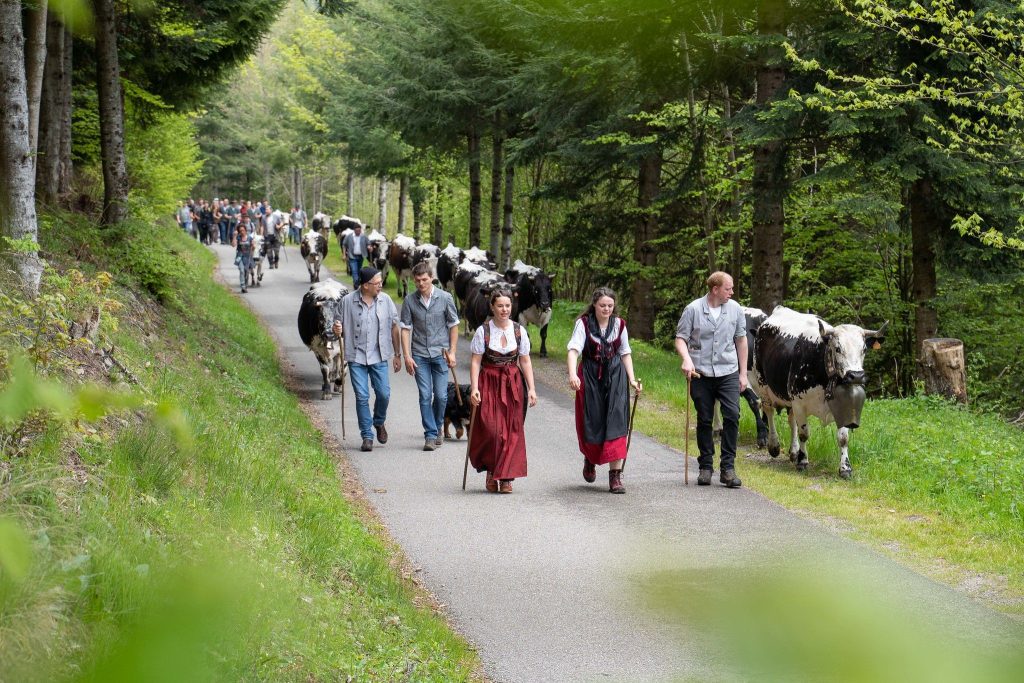Office de Tourisme de la Vallée de Munster
Home - Fauna and Flora - The Vosges cow

A remarkably robust cattle breed, the Vosges cow is an excellent walker and is particularly suited to difficult terrain. Not very sensitive to sudden temperature changes, it is perfectly suited to the conditions of mountain farming.
Its balanced milk, rich in fat and protein, is ideal for making Munster cheese.
It has a black and white spotted coat. A white dorsal stripe extends from the neck to the tail. The head is generally white, speckled, or even ashen, down to the ears, which are black, as are the horns, nostrils and hooves.
The Vosges cow has a black and white or red and white coat. It is speckled in certain areas and is easily recognizable by the white stripes running along its back and belly. Its hair is short and smooth. Its hooves, ears and mucous membranes are black, but its tail and limbs are white.
The coat of the Vosges cows with a red coat, also called Vosges pie rouge, is due to the presence of a recessive gene and constitutes 2 to 3% of the Vosges population.

Its stocky and light appearance makes it an agile, strong and solid bovine breed. Its back has a very straight appearance. It has thin, strong and short limbs, which make it an excellent walker. The Vosges has horns, if they are not cut by the breeder, turned upwards. Its udders are smaller than those of its competitors, because it must be able to move in tall grass and brambles without getting scratched.

During spring and summer, when they are on the high Vosges pastures, the Vosges feeds on the grass present. In autumn and winter, when it goes back down to the valley, it feeds on fodder from the meadows, and on hay when it can no longer leave the stable.

Every year, Vosges cows carry out a transhumance allowing them to access summer pastures and winter pastures. This long walk, often open to visitors, then allows the cows to access the high moors in the spring by reaching the farm at a higher level, and to go back down to the valley in the autumn to consume fresh fodder. At this time, the fodder of the high stubble dries out and the temperature becomes too low to suit the cattle.
The transhumances open to the public constitute a real folkloric event, where the farmers are dressed in the traditional way as marcaires, the cows are washed, brushed, and adorned with flowers.
The herd then follows the lead cow, which has the largest bell; the latter serves as a guide with the marcaire. Find the various associated events on this page:
https://www.vallee-munster.eu/fr/curieuse/sites-musees-traditions/transhumances-valleemunster. html



The Vosges cow is very docile with humans, in addition to being very curious. She may come to see you during a walk to sniff your hand. She is very sociable. On the other hand, towards other cattle breeds, she will tend to be dominant by giving horns for example.
With the heat waves caused by global warming, cows reduce their milk production.
The Vosges cow is very robust, its production will decrease less than would another cattle breed. Indeed, cows need a lot of water to be raised in optimal conditions, it must be provided to them. In addition, drought limits fodder production, so an even larger area of meadow is needed to feed it. This becomes complicated for breeders who have to buy additional fodder to make up for this shortfall.
Will global warming put an end to the efforts made by various associations for the preservation and reintroduction of the Vosges? Only the future will tell, but genetic selection research could be used to select the genes that are most resistant to drought.
The Vosges cow is said to have originated in the 17th century. There are several different theories to explain its appearance in the Vosges mountains.
This cow is said to have (then) come from Switzerland, from where it migrated, or else arrived with the Swedish army during the Thirty Years’ War. This hypothesis could seem plausible, because the Vosges is very similar to other breeds of the Nordic branch, particularly because of its spots on its flank. Other less fanciful theories say that the Vosges cow is the result of crossbreeding a type of Montbéliarde and a Prim’Holstein.
The Vosgienne used to pull agricultural equipment, thanks to its great robustness. It was replaced during the mechanization of agricultural production. Its robustness is very appreciated by breeders, its veterinary and health costs are low. It is not very precocious, but has a great longevity, and produces milk for a very long time.

Faced with this worrying decline, enthusiasts created an association, the “Herd Book Vosgien”, in 1977. The latter’s aim is to create a family tree, aptly called “Herd Book” in English, which sets out the characteristics of the Vosges breed. This association has allowed to increase the number of heads of 7000 specimens only under the presidency of Jean Wehrey, better known under the name of Hansi, and who distinguished himself for his fight in the preservation of the Vosges breed and the democratization of farm inns.
In the 20th century, to avoid the risks of inbreeding, Telemark blood, a breed of Norwegian origin, was introduced. It is estimated that 1/8 of the share of Telemark blood present in the population currently.

The Vosges cow lives on stubble and has adapted very well to the Vosges climate as well as to steep slopes. The Vosges cow is not very sensitive to calcium deficiencies, which are very little present in stubble. The Vosges massif, which is the origin of the name Vosges, is also the ideal holiday destination for Vosges cows.
The majority of herds are located in this territory in three regions: Alsace, Lorraine and Franche-Comté. It is a mid-mountain massif with steep reliefs.
The Vosges cow was put in the spotlight at the Salon de L’agriculture in 2011, where Candy the Vosges cow was the mascot of this edition.






Its fine bones and low proportion of fat also make it a very good butcher’s product. From this meat, a very well-known dish is produced in Alsatian homes, Baeckeoffe (“bread oven” in Alsatian). The latter is made up of various meats, lamb, beef, and pork, first marinated and then simmered for more than 24 hours. Various vegetables are added to the meat, including carrots, potatoes, and onions. Other dishes include gendarmes (smoked sausages made of minced and spiced meat), beef sausage, or even dried beef.
Over the years, the Vosgienne has built a strong reputation and has almost been resurrected thanks to the breeders’ love for this breed. It is an example of quality bovine production, and is a very endearing breed due to its physique and character.

Sources: Vosges Cattle Breed Selection Body and Haut Rhin Chamber of Agriculture.
Contact: ede@hautrhin.chambagri.fr
Contact : ede@hautrhin.chambagri.fr

Saturday: 09:30 – 12:00 and 14:00 – 17:00
